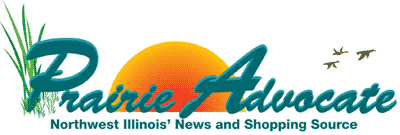

Discover rewarding casino experiences. 
|
More Raw Milk Rules Appear on June 11 Agenda, DWG Input ‘Ignored’By Tom Kocal | Prairie Advocate NewsPart 1 CLICK HERE, Part 2 CLICK HERE, Part 3 CLICK HERE, Part 4 CLICK HERE, Part 5 CLICK HEREThe Dairy Work Group (DWG) Meeting of the Illinois Department of Public Health (IDPH) Division of Food, Drugs and Dairies held a Conference Call meeting on June 11, 2013 from 1:00pm to 3:00 pm. This was the first meeting held after the May 1 DWG public meeting held in Bloomington. Those calling in were Molly Lamb, Division Chief of the IDPH Division of Food, Drugs and Dairies; Steve Divincenzo, acting Dairy Program Manager for the IDPH; Cliff McConville, Barrington Natural Farms and a raw milk producer; Kelly and Rick Boge, Golden Guernsey of Illinois, raw milk producers from Elgin; Donna O’Shaughnessy, operator of South Pork Ranch LLC in Chatsworth; Robin Migalla, a raw milk consumer from Elgin; Leonard Sheaffer, Dixon farmer; Marc Gravert, Spring Valley Farms in Fulton; Guy Sproels, State Rating Officer for Grade A Dairy Farms and Production Plants; Jim Fraley, Illinois Farm Bureau representing the Illinois Milk Producers; John Ronan; Joe Delaney, Quality Control, pasteurized milk, Prairie Farms; Roger Healey; and John Nadig, Nadig Family Farm, Courtland. “The last meeting we spent a lot of time, and it was great, great learning for us all with the DWG to reorganize and come together,” Lamb stated, “to make sure everybody is headed down the same track. We have some common understanding, and where some aspects need more ‘massaging,’ if you will. Now we can take the next step, and get to the meat and potatoes. The agenda was designed to begin with the common ground issues from the last meeting, and come to an agreement on some of them today, and check them off our list. Then we can segue to the next meeting where we will need more in-depth discussion.” Testing requirements was the first topic discussed - Four Times in a Six Month Period of Time; annual testing, triennial testing, and every time raw milk is offered for sale. “These basically follow guidelines that we’re requiring now for pretty much all of our producers,” said Divincenzo. “First item is cooling of the milk to 50°F or less within four hours or less of beginning of the first milking and to 45°F or less, within two after completion of milking.” John Nadig asked if they had looked into the cost of the proposed requirements - more specifically the testing for coliform, bacteria, somatic cell, and pathogens, ie: salmonella, e. coli, listeria and campylobacter. Divincenzo said yes, there were independent laboratories that conduct these tests. “They are required from all of our producers.” “You have basically ignored our meeting last time, and just pushed forward YOUR agenda on the rest of us,” Nadig quickly interjected. “You have not even shown us why we need these rules. Zero explanation given to any of us. All that’s been said is that you are interfering, with over-regulation of our right as citizens to provide healthy food for people. That has been completely ignored.” Lamb tried to say something, but Nadig tersely said, “I know, you ‘want to move forward,’ but we’re not moving forward. This is moving backwards. None of the raw milk people on this committee feel that we are moving forward.” Lamb “apologized” for not being clear about the May 1 meeting, and reiterated that “currently, we do not have any rules about raw milk, and in order to make the sale of raw milk legal in Illinois, there needs to be rules developed.” “Does there need to be rules to make the selling of asparagus legal?” Nadig asked. “Because that’s illegal according to your logic.” “It all has to do with legality and legislation that is already in place,” Lamb explained. “Go to the Grade A Milk and Milk Products Section 8, it says ‘raw milk can be sold from the dairy farm premises in accordance with rules.’ That means there must be rules to supplement how that’s to be done. There are no rules right now.” “If there are no rules, that’s the rules,” Nadig pressed on. “We’re not Grade A, either. That’s the pasteurized milk ordinance, and we’re not dealing with pasteurized milk.” “This is the exception within the pasteurized milk ordinance,” Divincenzo stated, “under our act. It allows for the sale of raw milk on the premises of the farm. We’re developing rules, this isn’t a Grade A act, we need to follow Grade A rules.” Gravert quickly pointed out the main issue the raw milk producers have had since the January meeting: “YOU are developing rules. You have not asked us what to do.” “We, as a group, are,” Divincenzo countered. Lamb said, “These are just talking points.” “No, they are not,” Nadig vehemently replied. “You will put this in, and it will be regulation, and we will have to live by it. We’re the ones that feed our families, and have people trying to get healthy food, and you’re shutting it down. No questions asked, that’s what you’re doing. Don’t lie to us. If you’re moving forward, you are not moving forward with the consent of the entire group.” Migalla asked for clarification about the actual rules and requirements in place for raw milk producers, compared to what is being proposed, based on pasteurized milk ordinances. “There aren’t any requirements right now, no rules, for the sale of raw milk only,” Lamb confirmed. “Section 8 says that there is a rule that the milk must be picked up on the premises,” Nadig stated. “That’s the rule, and that’s fine with everybody.” “I just want to correct you,” Lamb said, “That is in the Act, which is different, but it’s not in accordance with the rules. We don’t have rules, which is the legal opinion from our legal department right now.” “Well, I propose we make the rule that people pick it up at the premises, and that’s the rule,” Nadig stated. “Now that’s the rule, and we don’t have to worry about anything else.” Lamb claimed Nadig had the “incorrect terminology,” but that they would look past that for now. O’Shaughnessy put it in perspective for the group: “We cannot go on with a meeting that has no structure. There are no Robert’s Rules; there is no voting; everything we discussed May 1st has been ignored. This agenda was written without the input from the group. Things have been changed without the input of the DWG. Where is the voting?” Again, as was explained in May, Lamb stated that the DWG was developed under the Food Safety ADVISORY group; that it is not a statutory body, which means they do not fall under the Open Meetings Act; they do not fall under Robert’s Rules of Order. (This claim by Lamb is still being reviewed by the Illinois Attorney General, based on a Request for Review by the Prairie Advocate in May.) “We are trying to work as transparently as possible,” Lamb said. “We’re trying to work with our stake-holders and interested parties. But the formality is, we have no voting, no voting members, no membership. There are recommendations to the department, that’s how advisory groups work, and they work with the overall group. “We’re hoping to come to a general concurrence and agreement, but it doesn’t have to be voted on, per say. Just recommendations to the department.” But the raw milk producers disagree, stating many rules proposals were added to both the June 11 and July 16 agendas, without ANY input from the DWG. Fraley said that from the beginning, the goal was to bring ALL dairy farmers to “the same plateau,” claiming that if you are going to sell fluid milk, you need to be a Grade A operation. “What the IDPH is saying, is that if we’re going to move to a Grade A dairy, whether it be a pasteurized producer or raw milk seller, then certain standards must be met. That’s what is pointed out in these agendas. That’s what a Grade A producer needs to meet.” “Why?” asked Nadig. “We don’t have the same volume; we’re a completely different animal, you’re comparing apples with oranges. It’s fluid milk, but it’s a completely different production model and system. And it has never been established WHY; you’ve ignored us, the answer we’re given is, ‘just because.’ There has never been a problem with the milk - the milk is healthy - We do not agree with any of these rules, and for the record, don’t send our names with these rules. You are not including us as agreeing to these rules, and you have not established why.” “Legality. Period,” stated Lamb. “There are no rules, that’s why it’s illegal.” “How does that make sense?” O’Shaughnessy asked. “It makes no sense whatsoever. Anything that there isn’t a rule written for means that it’s illegal? “We’re not even a ‘dairy farm,’ according to the directions and identification in the PMO (Pasteurized Milk Ordinance). We don’t even meet the dairy farm description,” O’Shaughnessy added. Lamb suggested she get a statement from the legal department to help clarify this confusing explanation, but most felt it would not help. Kelly Boge was clear: “As a general consensus of our group, you’re not going to get one step forward because the way it is written.” Migalla said it clearly: “I think you understand that no raw milk producers want to be Grade A dairies. You understand that many will be put out of business if they have to comply with Grade A standards.” “If raw milk producers had wanted Grade A standards, they could pursue it and sell milk to dairies,” said Rick Boge. “If you’re going to make us jump through all these hoops, you’ve got to even the playing field by allowing raw milk at retail in the state. You can’t make us do all the rules and suffer through the consequences, then not be able to even make a living, or have the option of going to the next level with it. It doesn’t seem fair to do one without the other.” The tone of this discussion, which so far, was only the first 20 minutes of the 2-hour meeting, continued. In correspondence after the meeting with O’Shaughnessy, she said, “In the [agenda] from Lamb, they have certainly gone over and above the workgroup by adding new proposed rules that were not discussed at the first meeting, I am appalled, I am angry, but I am not surprised. As a group, we will continue to ask them to leave all rules alone, but it is obvious that the IDPH is not at all interested in either the small farmer or the consumer.” “What percentage of the producers do you know that can meet all of these rules?” asked Leonard Sheaffer, DWG member, after the call. “No dipping or ladling of the raw milk; Test for antibiotics every time milk is offered for sale; Bulk tank. My daughter Renne sells milk from specific breeds requested by the customer. A bulk tank will not work for this. These are a few of the rules that stand out for me. I think we need to get these rules out to Raw Milk supporters, so they can make contacts in opposition to them.” “The first 30 minutes were very, very tense and there was one point where I thought we, the farmers, might start hanging up,” O’Shaughnessy continued. “Molly and Steve had NOT listened to the pro-raw milk comments made at the May 1 meeting, since we asked for no limit on production. The [July 16] agenda stated a limit of 500 gallons a month. Plus, the additional wording about milking by hand was never discussed by the group, as well as specific standards for testing, also not clarified at the May 1 meeting. John Nadig said, ‘We are NOT moving forward,’ and we all agreed. “I asked to start over. To wipe the slate clean, since all proposed rules were made BEFORE any raw milk farmers were added to the group. Molly asked the group if that was OK. We all agreed. And we started over. Blank slate.” O’Shaughnessy said that Lamb’s restating that there are no rules at the time forced the group to insist on clarification of why rules had to be written at all. “Molly struggled with us questioning her authority, insisting she worked closely with their legal department and spoke for them. We insisted on actual legal department representation at our next meeting in July to clarify the PMO, the definition of ‘dairy farm’ etc.” O’Shaughnessy also insisted that the DWG do a complete and thorough study of what other states are doing with raw milk rules and regulations, as they continue to evolve on a daily basis. “More and more are lessening their rules on raw milk. Steve (Divincenzo) . . . stated that the work was already done by him, and did not need another look. I insisted it did, and Lamb assigned that task to me. “Molly knows she has the authority to pass rules without our input, but she (sees) it has gone too far for that. The public outcry from news coverage in The Prairie Advocate, my blog coverage, the attendance at the May 1 meeting, Face Book comments, etc. would make the department look very bad. She, in my opinion, is trying to salvage what she can. She wants some rules, she must have them for her superiors, but they will be far less restrictive than she intended.” O’Shaughnessy said that Rick Boge suggested VOLUNTARY licensure or permitting for a raw milk dairy with high test standards being met via an independent group like the Raw Milk Institute, but with great privileges, like retail raw milk sales. Lamb visited Kelly and Rick Boge’s Golden Guernsey of Illinois in Elgin a couple of weeks ago. She added that Jim Fraley of the IL Farm Bureau contacted her immediately after the conference call, asking to visit their farm in Chatsworth. “We agreed, and that will take place this Tuesday (June 18).” For the record, it was noted by O’Shaughnessy that very few pasteurized milk producers called in, “and those that did, only two spoke. The make-up of the group has greatly shifted toward the pro-raw milk producers.” Overall, the feeling of the Raw Milk producers is clear that public disclosure in a diverse society such as ours is the key to freedom in America. If public disclosure is not conducted by government officials at any level, then this society will be directed and manipulated by inappropriate laws. When creating these laws, public officials must vigorously defend everyone’s Constitutional Rights, first and foremost. And they must be created in the light of day. The next official meeting of the Dairy Work Group is set for Tuesday, July 16, from 1:00 pm to 3:00 pm at the IAA Building in Bloomington, Illinois.
Loading
|

